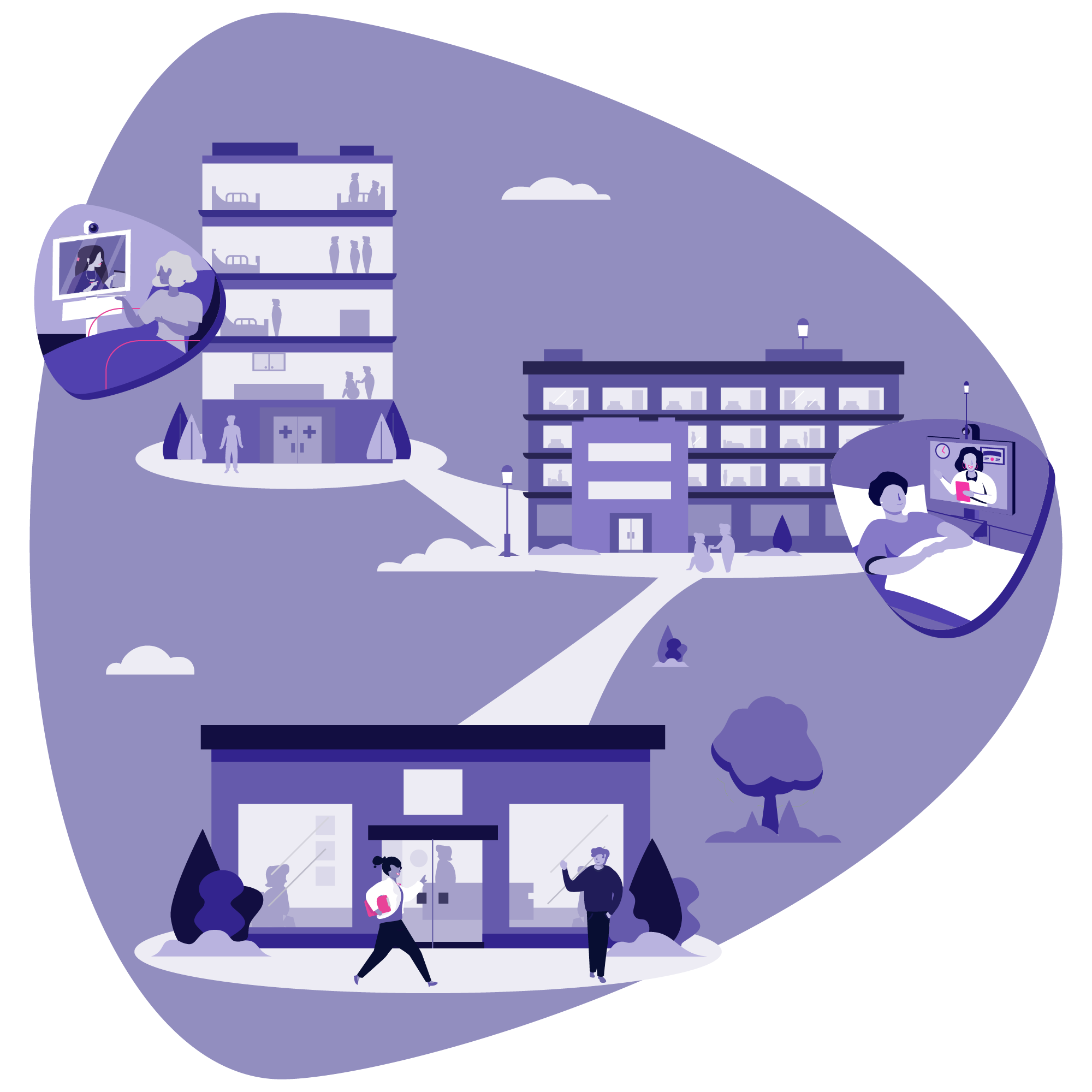Integrated mental health services acknowledge that mental health and physical health don’t exist in silos and make high-quality care a reality for patients across the country. What initially began as co-location, a model that puts behavioral health and primary care providers in the same building, but not on the same team, has evolved into a collaborative approach that improves patient outcomes.
This convergence of medical and behavioral health facilitates true collaboration between providers, offers patients the best possible care, and mitigates downstream medical costs. Telepsychiatry helps elevate collaboration even further by making specialty expertise readily available for organizations and their providers.
Read on to learn more about this innovative approach and all the benefits it offers organizations and patients across the country.
The importance of integrated care
The overlap between medical and behavioral conditions is part of what makes integrated care so essential. According to the National Institute of Mental Health (NIMH), chronic illnesses such as cancer, heart disease, and diabetes can make someone more susceptible to developing a mental health condition. Likewise, depression can increase the risk of many physical health problems such as heart disease and stroke.
Other co-occurring conditions include:
- Diabetes: People with diabetes are two to three times more likely to experience depression, and only 25%-50% of people with diabetes and depression get diagnosed and treated
- COPD: Around 40% of people with COPD are affected by severe depressive symptoms or clinical depression
- Inflammation: Higher rates of inflammation can put those with a history of heart attacks at increased risk of depression
The mind and body connection plays a significant role in our everyday lives and makes provider collaboration crucial to a holistic approach to patient care.
The benefits of integrated behavioral health care
According to the American Psychiatric Association, the collaborative care model can effectively control costs, improve access and clinical outcomes. Additionally, it can also increase patient satisfaction in various primary care settings, including rural and urban communities. There are also impactful benefits for patients and providers.
For patients
Convenience is king. When all providers are under one roof, it supercharges the patient experience and eliminates the chance of duplicate procedures, labs, and diagnostics. With integrated care, patients don’t have to worry about requesting records or keeping them on hand because their providers already have them.
For providers
The integrated care model also saves providers time and money. The collaborative model takes the approach of integrating mental health into primary care at the same facility, and their records access is optimized. Shared insights into medical records reduce the risk of medication interactions, allowing providers to see patient prescriptions at the primary care or behavioral health level.
Additionally, the American Psychological Association cites improved patient outcomes, cost savings, and reduced mental health stigma as additional benefits of the integrated care model.
Getting your integrated behavioral health care program started
As with implementing any new process, there may be initial start-up challenges. For example, unless teams are already using the same medical record system, training may need to be implemented to ensure everyone knows how to use the system properly.
It can be easy for teams to revert to a co-location model. Change is challenging and can create hesitation around learning a new medical record system or moving beyond simply referring someone down the hall for a primary care check-up.
The integrated care model takes things a step further, circles back and asks, “How did that go?” “What kind of follow-up do I need to do on that referral?” This model facilitates a more comprehensive level of care that provides more convenience, is cost-effective, and offers a higher level of healthcare for patients and providers.
The value of this model can’t be overstated, and despite initial challenges, it’s essential for teams to keep moving forward. With an integrated care model, everyone benefits in the long run.
Achieving cross-functional buy-in for integrated mental health services
The integrated care model makes tedious processes like tracking down records and labs seamless. It also helps assure providers that their patients are getting holistic treatment for any co-occurring conditions. For example, suppose a patient with diabetes is prescribed an antipsychotic. It’s helpful for the provider to know that their patient is getting high-quality treatment for their diabetes. For these reasons and more, providers typically feel enthusiastic about the new model. However, it’s essential to share those benefits with the rest of the staff and patients.
Walking the team through the process and any new steps is crucial to a successful transition. Ensuring your staff is well-informed of changes, why you’re doing them, and the potential snares can help everyone feel more comfortable.
It’s also important to get buy-in from nurses and staff. Placing these team members on the committee leading the charge towards integrated behavioral health care can make a big difference in the organization’s adaptability.
How organizations are embracing integrated mental health services
Integrated health is the future of funding. It’s one of the direct outcomes of the Medicaid 1115 waivers, it’s a primary outcome for certified community behavioral health centers (CCBHC), and it’s going to be something that insurance payers, Medicare, and Medicaid will require. The fact of the matter is, integrated care isn’t going to be optional at a certain point.
Healthcare organizations want the best for their patients, and offering the full spectrum of care helps them achieve this goal.
Where telepsychiatry fits in
Telepsychiatry elevates the integrated care model and makes specialty care more accessible. This virtual approach to psychiatry is crucial as the country experiences a growing provider shortage. As a 2017 report by the National Council for Behavioral Health revealed, the U.S. may be short by 6,090 to 15,600 psychiatrists by 2025. This shortage makes having a behavioral health provider available even more essential for on-site medical teams.
Having easy access to specialists is especially important in rural areas where finding providers can be particularly challenging. Telepsychiatry simplifies this process by integrating into multiple locations with one set of staff. For instance, you might have one primary care provider in an eight-county rural area. Instead of finding eight providers to go into each clinic, having one who can be plugged into several different centers is highly beneficial.
The future of integrated care
As of 2017, the American Hospital Association (AHA) reports health systems across the U.S. are utilizing some form of integration in the following areas:
- 51% emergency services
- 38% primary care services
- 46% acute inpatient services
- 17% extended care
This integrated model is quickly becoming the benchmark for high-quality care. As more health systems move away from siloed treatment and towards holistic, person-centered care, the more significant the benefits.
How Iris Telehealth can help
Iris Telehealth envisions a better world through healthy minds, and we’re continually expanding our psychiatry services to those who need it most. If your organization is interested in implementing a telepsychiatry program that can seamlessly integrate into your healthcare organization, Iris can help. Contact us today.


